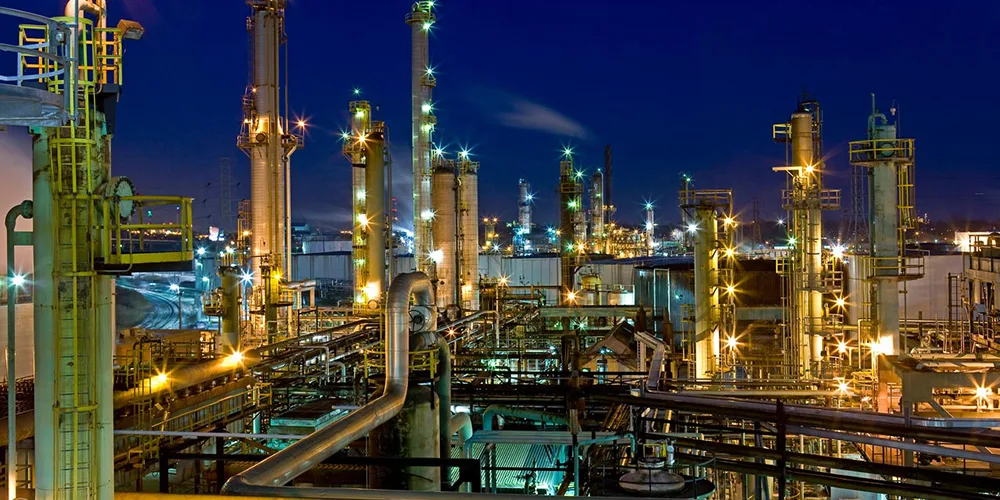Business
API 653 Inspection vs. API 570: What’s the Difference?
Published
5 months agoon
By
Prime Star
When it comes to maintaining the integrity of industrial equipment used in oil, gas, and chemical industries, inspection standards play a crucial role. Among the most widely used standards are API 653 inspection and API 570, which are established by the American Petroleum Institute (API). Though both pertain to the inspection and maintenance of industrial components, they address different types of equipment and have distinct requirements. Understanding the differences between API 653 and API 570 is essential for compliance, safety, and optimal asset management.
Overview of API 653
API 653, known as “Tank Inspection, Repair, Alteration, and Reconstruction,” is a standard that focuses on the inspection and maintenance of above-ground storage tanks (ASTs). Introduced by API to ensure the safe operation of storage tanks that store petroleum products and other hazardous materials, the standard provides comprehensive guidelines for evaluating the condition of tanks over time.
Key Aspects of API 653:
1. Scope of Inspection: API 653 covers various elements, including external, internal, and on-stream inspections. The standard is applicable to tanks built according to the API 650 standard or equivalent, ensuring they remain fit-for-service throughout their lifecycle.
2. Inspection Frequency: The inspection schedule is determined by the tank’s condition, service history, and corrosion rate. External inspections are typically performed every 5 years, while internal inspections can be required as frequently as every 10 years, or sooner if conditions warrant it.
3. Corrosion and Thickness Measurement: One primary goal of API 653 is to monitor corrosion rates and conduct thickness measurements to ensure the tank’s structural integrity. This helps identify potential risks such as leaks or failures before they occur.
4. Repair and Reconstruction Guidelines: The standard details procedures for repairs, alterations, and even complete tank reconstruction, ensuring all work complies with safety standards.
A study by the National Institute for Occupational Safety and Health (NIOSH) highlights that 60% of tank-related accidents could have been prevented with regular inspections and maintenance following standards like API 653.
Overview of API 570
API 570, or “Piping Inspection Code: In-service Inspection, Rating, Repair, and Alteration of Piping Systems,” applies to the inspection and maintenance of in-service piping systems. It is primarily used in the oil, gas, chemical, and power generation industries where piping systems are critical components for transporting fluids.
Key Aspects of API 570:
1. Scope of Inspection: API 570 focuses on process piping systems, covering aspects such as inspection procedures, thickness measurements, corrosion evaluations, and integrity assessments. It applies to pipes made of various materials, including metallic and non-metallic components.
2. Inspection Frequency: The inspection frequency for piping systems depends on factors such as fluid service, corrosion rates, and previous inspection results. Higher-risk systems may need inspection every 5 years, while lower-risk systems could extend to 10 years or more between inspections.
3. Fitness-for-Service Assessments: API 570 evaluates whether the piping system remains safe for continued operation. This includes assessing corrosion rates, potential damage mechanisms, and the overall structural condition of the piping.
4. Repairs and Alterations: The standard provides guidelines to tank inspection services professionals for performing repairs and alterations on piping systems, ensuring that any work done meets safety and operational requirements.
The American Society of Mechanical Engineers (ASME) reports that 40% of failures in piping systems can be attributed to corrosion, underscoring the importance of following standards like API 570 for regular inspections and maintenance.
Key Differences Between API 653 and API 570
1. Type of Equipment Covered: The most significant difference lies in the type of equipment being inspected. API 653 is specifically for above-ground storage tanks, while API 570 is focused on process piping systems. This distinction is crucial because tanks and pipes face different stresses, risks, and operational challenges.
2. Inspection Procedures and Frequency: While both standards emphasize regular inspections, their specific requirements differ. For instance, API 653 requires both internal and external inspections, whereas API 570 primarily involves external inspections of piping systems, supplemented by non-destructive testing (NDT) techniques.
3. Repair and Alteration Guidelines: The guidelines for making repairs also vary. API 653 includes extensive procedures for tank bottom repair, which is a common issue in ASTs due to ground settling and corrosion. On the other hand, API 570 focuses more on replacing or repairing sections of piping affected by corrosion or damage.
4. Fitness-for-Service Approaches: While both standards use a fitness-for-service (FFS) approach, the parameters used differ based on the nature of the equipment. For tanks under API 653, factors like settlement, shell bulging, and roof integrity are considered. In contrast, API 570 for piping systems takes into account factors like erosion-corrosion, thermal fatigue, and vibration damage.
Compliance Benefits
Adhering to API 653 and API 570 ensures that industrial facilities can mitigate the risks of equipment failure, leaks, and accidents. According to the U.S. Environmental Protection Agency (EPA), compliance with these standards can reduce incidents by 50%, thereby avoiding significant environmental and financial consequences.
Conclusion
Although API 653 and API 570 both aim to ensure the safety and longevity of industrial equipment, they cater to different types of assets—storage tanks and piping systems, respectively. By understanding these distinctions and following the appropriate guidelines, companies can effectively manage their inspection schedules, repair needs, and compliance obligations. This proactive approach not only enhances safety but also extends the operational life of critical infrastructure, ensuring ongoing productivity and environmental protection.